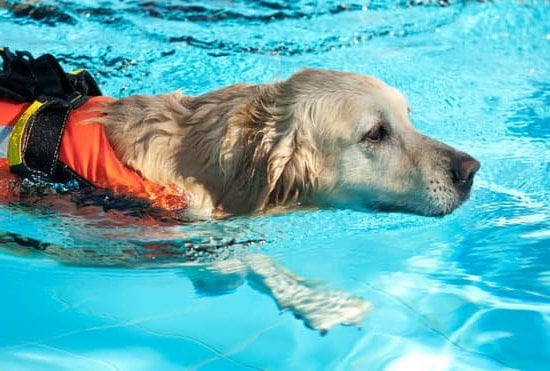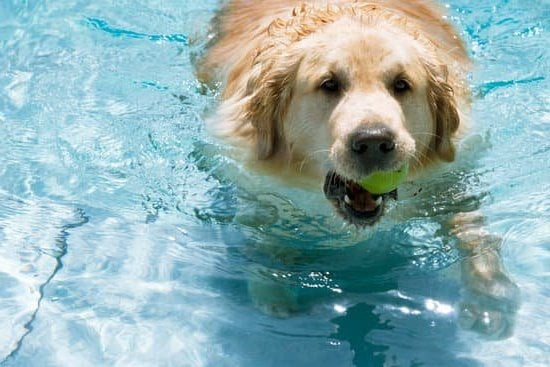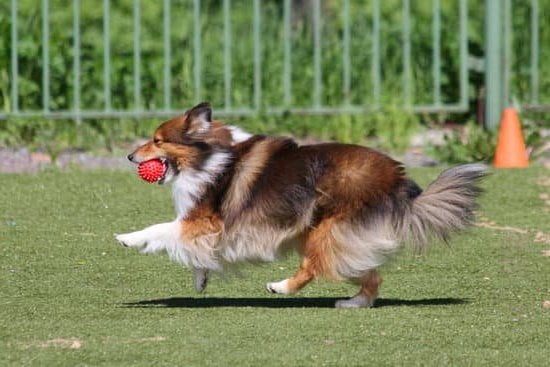Are you a pet owner looking to train your furry companion? Finding the best dog training collar is essential in ensuring effective and successful training.
Dog training collars are a popular tool used for obedience and behavior training, providing pet owners with an effective means to communicate with their dogs. In this article, we will explore the different types of dog training collars available on the market, considerations for choosing the right collar, top recommendations, and tips for safe and effective use.
When it comes to dog training, using the best training collar is crucial for achieving desirable results. These collars serve as a communication tool between the pet owner and their dog, aiding in teaching obedience commands and addressing behavioral issues. Understanding the purpose of these collars and selecting the most suitable one according to your specific needs can significantly impact your training success.
In the following sections, we will delve into the various types of dog training collars, including shock, vibration, and sound collars. We will also discuss important considerations when choosing a collar, such as your dog’s size and breed, as well as budget constraints.
Additionally, we’ll provide recommendations for the top 5 best dog training collars currently available on the market and offer guidance on how to use them safely and effectively. Whether you’re a first-time pet owner or looking to enhance your training methods, this comprehensive guide on dog training collars has got you covered.
Types of Dog Training Collars
When it comes to choosing the best dog training collar for your furry companion, it’s essential to understand the different types of collars available and their respective pros and cons. Each type of collar is designed to serve a specific purpose, and knowing the distinctions between them can help you make an informed decision based on your training goals and your dog’s unique needs.
Shock Collars
Shock collars, also known as e-collars, are designed to deliver a mild electric sensation to the dog’s neck when triggered by a remote control. These collars are often used for behavior correction and off-leash training. While they can be effective in stopping unwanted behaviors, such as excessive barking or jumping on people, it’s important to use them cautiously and under the guidance of a professional trainer to avoid causing harm or distress to the dog.
Vibration Collars
Vibration collars are an alternative option that uses vibration instead of electric stimulation. When activated, these collars emit a vibrating sensation that can act as a gentle reminder or cue for the dog. Vibration collars are often favored for training deaf dogs or those sensitive to sound or electric stimuli. They can be effective in reinforcing commands or redirecting attention without causing discomfort.
Sound Collars
Sound collars, also known as ultrasonic or citronella collars, work by emitting a high-pitched sound or a burst of citronella spray when triggered by certain behaviors. The sound or scent is intended to interrupt the undesired behavior and redirect the dog’s attention. Sound collars are often used for bark control and can be useful in situations where other forms of correction may not be suitable.
Understanding the differences between shock, vibration, and sound collars can help you make an informed decision when choosing the best dog training collar for your pet. It’s crucial to consider your dog’s temperament, sensitivity, and specific training needs before selecting a collar type that aligns with your training goals and methods.
Considerations for Choosing the Best Dog Training Collar
When it comes to choosing the best dog training collar for your furry friend, there are several important considerations to keep in mind. The first thing to consider is the size and breed of your dog.
Different breeds have different temperaments and energy levels, so it’s essential to choose a training collar that is suitable for your dog’s specific needs. For example, smaller breeds may require a gentler form of correction, while larger breeds may need a more robust collar.
Another crucial factor to consider is your training goals. Are you looking to correct behavioral issues, teach basic obedience commands, or address specific problems such as excessive barking or leash pulling? Each of these goals may require a different type of training collar, so it’s essential to consider what you hope to achieve through training.
Lastly, budget is an important consideration when choosing the best dog training collar. While it’s always tempting to opt for the most affordable option, it’s crucial to remember that quality also plays a significant role in the effectiveness and safety of a training collar. Investing in a high-quality collar from a reputable brand can make a world of difference in your training experience and your dog’s response to the collar.
Here are some tips for finding the most suitable collar for your specific needs:
- Research different types of collars (shock, vibration, sound) and their suitability for different training goals.
- Read product reviews and user testimonials for insight into effectiveness and safety.
- Consider consulting with a professional dog trainer for personalized recommendations based on your dog’s behavior and temperament.
| Consideration | Tips |
|---|---|
| Size and Breed of Dog | Choose a collar suitable for your dog’s size and temperament |
| Training Goals | Select a collar that aligns with your specific training objectives |
| Budget | Invest in a high-quality collar from a reputable brand for best results |
Top 5 Best Dog Training Collars on the Market
When it comes to choosing the best dog training collar, there are numerous options available on the market. To make the selection process easier for dog owners, here are in-depth reviews of the top 5 best dog training collars currently available.
1. SportDOG Brand 425 Remote Trainers: This dog training collar offers a range of 500 yards and can be used to train up to 3 dogs with the same remote. It features 21 levels of static stimulation and vibration, making it suitable for dogs of all sizes and temperaments.
2. PetSafe Yard & Park Rechargeable Dog Training Collar: With a range of 400 yards, this collar is ideal for outdoor training sessions. It offers both tone and vibration stimulation with 8 adjustable levels for each, allowing for gentle yet effective training.
3. Dogtra ARC Handsfree Remote Trainer: This hands-free remote trainer is perfect for active dog owners who need their hands free during training sessions. It features a slim design, a range of 3/4 mile, and precise stimulation control with low to medium power options.
4. Garmin Delta Sport XC Bundle: This comprehensive bundle includes a handheld unit and dog device with built-in BarkLimiter™ technology that helps control barking or howling. It also has long and short interchangeable contact points to accommodate all coat lengths.
5. Educator E-Collar Remote Dog Training System: Known for its ergonomic design and versatile features, this training system offers a wide range of stimulation levels from low to medium along with tapping sensation which makes it one of the most customizable training collars available.
By carefully considering the needs and characteristics of your dog, you can select the best dog training collar from these top choices available on the market.
How to Use a Dog Training Collar Safely and Effectively
Using a dog training collar can be a highly effective tool in teaching your furry companion obedience and good behavior. However, it is crucial to understand how to use a dog training collar safely and effectively to avoid causing any harm or distress to your pet. Here are some important guidelines for using a dog training collar in the best way possible.
Proper Introduction and Acclimatization
Before using a dog training collar on your pet, it is important to properly introduce them to the collar and allow them to acclimate to wearing it. Start by allowing your dog to sniff and investigate the collar before gently placing it around their neck. Let them wear the collar for short periods of time initially and gradually increase the duration as they become more comfortable with it.
Appropriate Training Techniques
When using a dog training collar, it is essential to pair its use with appropriate training techniques. Positive reinforcement methods, such as rewarding good behavior with treats or praise, should be incorporated into your training sessions along with the use of the collar. Additionally, practice consistency and patience in your training approach to ensure that your pet understands what is expected of them.
Common Mistakes to Avoid
One common mistake when using a dog training collar is applying too much pressure or using it excessively. It’s important to remember that the purpose of the collar is to communicate commands, not cause pain or discomfort. Always start at the lowest level of stimulation and only increase if necessary. Moreover, never leave the collar on for extended periods of time, as it can lead to irritation or injury on your pet’s neck.
By following these guidelines for safe and effective use of a dog training collar, you can maximize its benefits in helping your pet learn proper behavior and obedience. Remember that every dog is unique, so pay attention to their individual responses during training and adjust accordingly. When used properly, the best dog training collars can be an invaluable asset in enhancing communication and bonding between you and your canine companion.
Training Techniques and Tips for Using a Dog Training Collar
Training your dog with the best dog training collar requires effective techniques and tips to ensure that the training sessions are successful and beneficial for both you and your furry companion. Here are some essential training techniques and tips for using a dog training collar:
1. Positive Reinforcement: When using a dog training collar, it’s important to focus on positive reinforcement as a primary training method. This means rewarding your dog with treats, praise, or playtime when they exhibit the desired behavior. By associating positive outcomes with good behavior, your dog will be more motivated to follow commands and act accordingly.
2. Behavior Correction: The best dog training collars can be used for behavior correction when necessary. However, it’s crucial to correct unwanted behaviors in a gentle and humane manner. Avoid using excessive force or punishment when using the collar, as this can cause fear or anxiety in your pet. Instead, focus on redirecting their attention and providing clear cues for the desired behavior.
3. Consistency: Consistency is key when using a dog training collar. Set clear expectations for your pet and consistently reinforce these expectations during every training session. By being consistent with your commands and responses, you’ll help your dog understand what is expected of them, leading to more effective training outcomes.
Remember that every dog is unique, so it’s important to tailor your training methods to suit your pet’s personality, temperament, and specific needs. Always prioritize the well-being of your furry friend when using a training collar, and seek professional guidance if you have any concerns about implementing this training tool effectively.
By incorporating these techniques and tips into your dog training routine, you can maximize the effectiveness of the best dog training collar while also fostering a strong bond with your canine companion through positive reinforcement and gentle behavior correction approaches.
Alternatives to Dog Training Collars
When it comes to training our furry companions, there are a variety of methods and tools available to help shape their behavior. While dog training collars can be effective for many dogs, some pet owners may prefer to explore alternative training techniques. Whether due to personal preference or specific needs of their dog, it’s important to consider all options before deciding on the best approach.
Here are some alternatives to dog training collars:
1. Positive Reinforcement Training: This method focuses on rewarding good behavior rather than punishing bad behavior. Using treats, praise, and toys as rewards can help reinforce positive actions and encourage your dog to repeat them.
2. Clicker Training: Clicker training is a form of positive reinforcement that involves using a clicker device to mark desired behaviors. The sound of the clicker signals to the dog that they have performed the correct action and will receive a reward.
3. Whistle Training: Whistle training involves using a whistle as a tool for giving commands and cues to your dog. Different whistle sounds can be used for different commands, such as recall or sit, making it an effective communication tool.
4. Target Stick Training: Target stick training utilizes a stick or pointer that the dog is trained to touch with their nose or paw in response to a cue. This can be helpful for teaching precise movements and agility exercises.
5. Treat Pouches and Food Dispensing Toys: These tools can be used in conjunction with positive reinforcement training methods by providing easy access to treats for rewards during training sessions.
It’s important for pet owners to explore different methods and tools when it comes to training their dogs. While dog training collars may be suitable for some dogs, others may respond better to alternative approaches based on their individual personalities and learning styles. By considering these alternatives, pet owners can find the most effective and humane way of shaping their dog’s behavior without the use of a traditional training collar.
Conclusion
In conclusion, choosing the right training collar for your dog is a crucial decision that can significantly impact the effectiveness of your training sessions. As discussed in this article, the best dog training collar for your furry companion will depend on various factors such as their size and breed, your specific training goals, and your budget. It’s important to carefully consider these factors and do thorough research before making a purchase.
When exploring the different types of dog training collars, including shock, vibration, and sound collars, it’s essential to weigh the pros and cons of each type based on your individual training needs. Additionally, reading in-depth reviews and comparing different products can help you make an informed decision about which collar will be most suitable for your dog.
While a dog training collar can be a valuable tool for obedience and behavior training, it’s also crucial to use it safely and effectively. This includes properly introducing the collar to your dog and following expert tips and techniques to maximize its effectiveness during training sessions. Ultimately, by investing in the best dog training collar and using it responsibly, you can set yourself and your furry friend up for success in achieving your training goals.
Frequently Asked Questions
What Type of Dog Collar Is Best for Training?
The best type of dog collar for training is usually a martingale collar or a slip/choke collar. These collars provide more control without putting excessive pressure on the dog’s neck, making them effective for training purposes.
What Is the Best Rated Dog Training Collar?
The best rated dog training collar will vary depending on individual preferences and the specific needs of the dog. Some popular options include the PetSafe Gentle Leader Headcollar, the Herm Sprenger Ultra-Plus Prong Training Collar, and the Educator E-Collar Remote Dog Training Collar.
What’s the Best Collar for a Dog That Pulls?
The best collar for a dog that pulls is typically a no-pull harness, such as the Freedom No-Pull Harness or the Easy Walk Harness. These types of harnesses are designed to discourage pulling by redirecting the dog’s forward motion without causing discomfort or choking.

Welcome to the blog! I am a professional dog trainer and have been working with dogs for many years. In this blog, I will be discussing various topics related to dog training, including tips, tricks, and advice. I hope you find this information helpful and informative. Thanks for reading!





